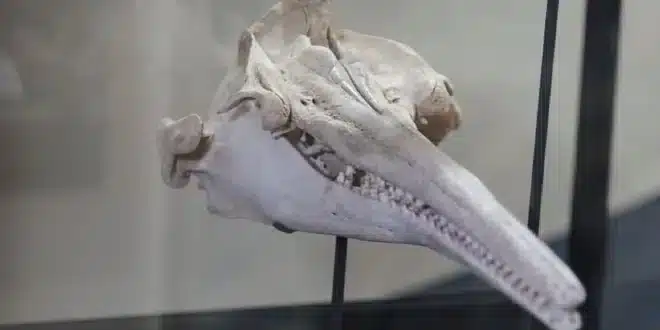In a significant paleontological discovery, researchers have uncovered the fossilized remains of a colossal extinct river dolphin. Found in Peru’s Amazonian rivers, this species, measuring up to 3.5 meters in length, stands as the largest river dolphin species identified to date.
Previously, it was theorized that these dolphins migrated from the ocean to the Amazonian rivers about 16 million years ago for refuge. This groundbreaking find is detailed in a study titled “The largest freshwater odontocete: A South Asian river dolphin relative from the proto-Amazonia,” published in the journal Science Advances.
The excavation, which took place in 2018 along the Rio Napo in Loreto, Peru, unearthed the dolphin’s skull and additional fossils dating back approximately 16.5 million years to the Early to Middle Miocene period. This newly discovered dolphin has been named Pebanista yacuruna gen. et sp. nov.
The study’s lead researcher emphasized that this discovery underscores the escalating endangerment faced by the planet’s remaining river dolphins, predicting they could face similar extinction threats within the next two decades.
Aldo Benites-Palomino, the study’s author, noted that P. yacuruna was a member of the Platanistoidea dolphin family, which thrived in the oceans from 24 million to 16 million years ago. Media reports quote Benites-Palomino describing the extant river dolphins as survivors of once diverse marine dolphin populations that ventured into freshwater rivers in search of new food sources.
He reflected on rivers as a sanctuary for these ancient dolphins, a role they continue to play for today’s river dolphins. The discovery came unexpectedly when Benites-Palomino and a colleague stumbled upon a jaw fragment during a walk. The realization that they had encountered a dolphin, particularly one not related to the Amazon’s pink river dolphin but instead closely linked to relatives in Southeast Asia, was both surprising and exhilarating.


